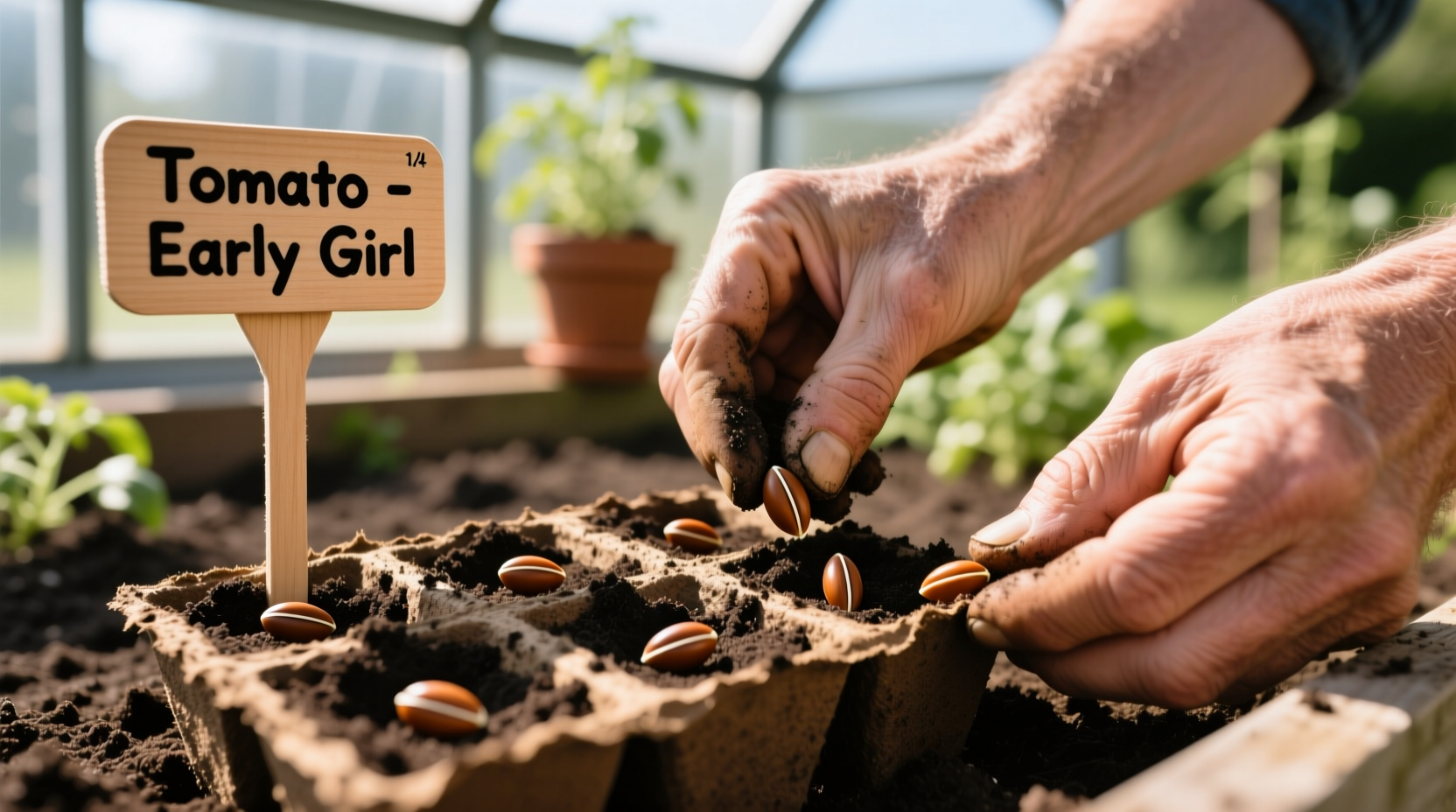Plant tomato seeds 6-8 weeks before your last frost date, using seed starting mix in containers with drainage holes. Maintain soil temperature at 70-80°F (21-27°C) for optimal germination, which typically occurs within 5-10 days. Keep seedlings under bright light and gradually acclimate them to outdoor conditions before transplanting.
Master Tomato Seed Planting: Your Complete Step-by-Step Guide
Nothing beats the satisfaction of growing your own tomatoes from seed. Whether you're a first-time gardener or looking to perfect your technique, this guide delivers everything you need to transform tiny seeds into thriving plants that produce abundant, flavorful tomatoes all season long.
Why Start Tomatoes from Seed?
Starting tomatoes from seed gives you access to hundreds of varieties unavailable at nurseries, saves money, and creates stronger, more resilient plants. With proper technique, you'll enjoy earlier harvests and better disease resistance compared to store-bought seedlings.
Essential Materials Checklist
- High-quality tomato seeds (determinate or indeterminate based on your space)
- Sterile seed starting mix (not regular potting soil)
- Containers with drainage holes (cell packs, peat pots, or recycled containers)
- Heat mat (optional but recommended for consistent germination)
- Grow lights or sunny south-facing window
- Watering can with fine rose attachment
- Fertilizer for seedlings (diluted to half-strength)
When to Plant Tomato Seeds: Timing is Everything
The perfect planting window depends on your USDA hardiness zone. Consult the USDA Plant Hardiness Zone Map to determine your specific last frost date, then count backward:
| USDA Zone | Last Frost Date | Seed Starting Date | Transplant Date |
|---|---|---|---|
| 3-4 | May 15-June 1 | March 15-31 | May 25-June 10 |
| 5-6 | April 15-May 15 | February 15-March 1 | May 1-15 |
| 7-8 | March 15-April 15 | January 15-February 1 | April 1-15 |
| 9-11 | No frost | November-January | February-March |
This timeline comes from research by Cornell University Cooperative Extension, which confirms that starting seeds too early leads to leggy, stressed plants while starting too late sacrifices valuable growing season.
Step-by-Step Planting Process
1. Prepare Your Containers
Sterilize reused containers with a 10% bleach solution. Fill with moist seed starting mix, leaving ½ inch space at the top. Gently firm the mix without compacting it.
2. Plant the Seeds Properly
Place 2-3 seeds per container ¼ inch deep. Cover lightly with mix and water gently using a spray bottle. Proper depth is critical—too deep and seeds may not germinate; too shallow and they'll dry out.

3. Create Ideal Germination Conditions
Maintain consistent soil temperature between 70-80°F (21-27°C). A heat mat improves germination rates by 30% according to University of California research. Cover containers with plastic wrap to retain moisture until sprouts appear.
4. Provide Adequate Light
Once seedlings emerge, provide 14-16 hours of bright light daily. Without sufficient light, plants become leggy and weak. Position grow lights 2-3 inches above plants, raising as they grow.
5. Water and Feed Strategically
Keep soil consistently moist but not soggy. Water from below to encourage root development. Begin fertilizing with a balanced, diluted solution when first true leaves appear.
6. Harden Off Before Transplanting
Gradually acclimate seedlings to outdoor conditions over 7-10 days. Start with 1-2 hours of morning sun, increasing exposure daily. This critical step prevents transplant shock and sunscald.
Avoid These Common Tomato Seed Mistakes
- Using garden soil - Contains pathogens and compacts in containers
- Overwatering - Causes damping-off disease (fatal to seedlings)
- Planting too deep - Prevents proper germination
- Skipping hardening off - Results in sunburned, stunted plants
- Starting too early - Creates tall, weak plants that struggle outdoors
Troubleshooting Germination Problems
Seeds not sprouting? Check these factors:
- Temperature below 60°F (15°C) - tomato seeds won't germinate in cold soil
- Old seeds - tomato seeds remain viable for 4-6 years when stored properly
- Excessive moisture - causes seeds to rot before sprouting
- Planting depth - deeper than ½ inch prevents emergence
Leggy seedlings? Increase light intensity or duration. Consider adding a gentle oscillating fan to strengthen stems.
Regional Planting Considerations
Your location significantly impacts tomato success. Coastal gardeners should choose varieties with shorter growing seasons, while desert gardeners need heat-tolerant varieties and afternoon shade. According to the USDA Agricultural Research Service, northern gardeners benefit from black plastic mulch to warm soil, while southern growers should plant in partial shade to prevent blossom drop during extreme heat.
Next Steps After Germination
Once your seedlings develop their first set of true leaves (not the initial cotyledons), thin to the strongest plant per container. Begin the hardening-off process about 7-10 days before your planned transplant date. Monitor weather forecasts and be prepared to protect young plants from unexpected temperature drops.











 浙公网安备
33010002000092号
浙公网安备
33010002000092号 浙B2-20120091-4
浙B2-20120091-4